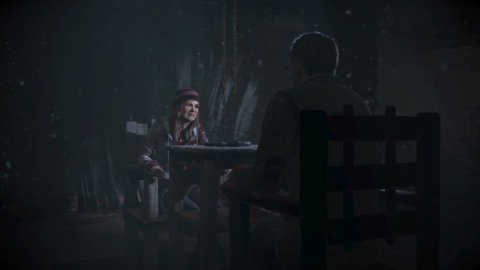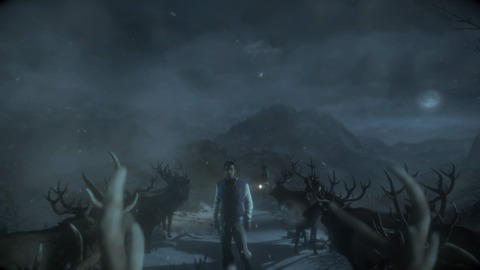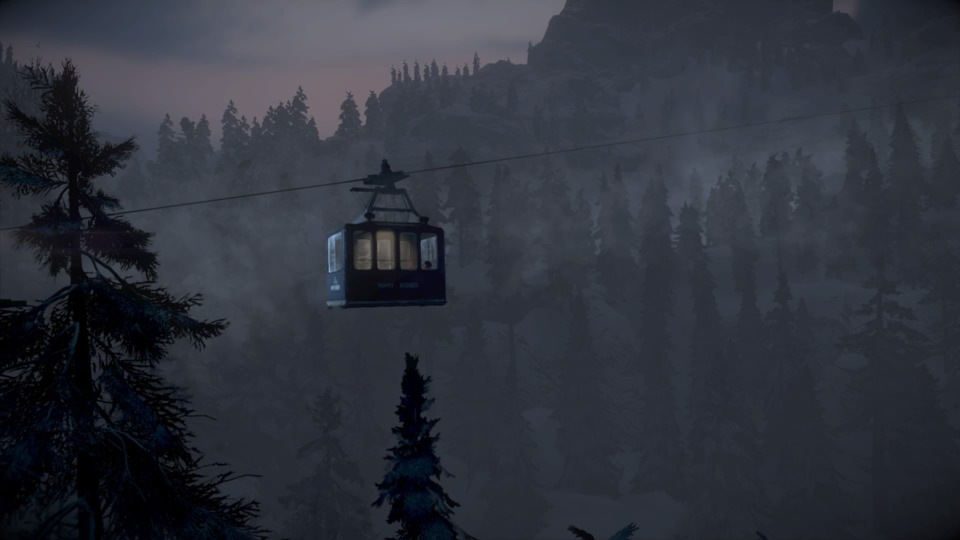Until Dawn Finds Horror in Conflicting Priorities
By Darth_Navster 7 Comments

As anyone who has watched a teen slasher flick can attest, the most common trope in that subgenre is the idiocy of the main characters. From running upstairs to get away from a killer to splitting up in the face of danger, the well-worn joke is that these coeds are simply too dumb to live. But what if the viewer got to be in control of these characters? Would they make different decisions based on the circumstances? Supermassive Games’s Until Dawn attempts to answer that question, and in doing so crafts an adventure that does some wonderful things with interactive fiction.
The setup for the game involves eight teens arriving at a lodge located high up in the mountains of Alberta. It has been one year since a prank at the very same lodge left two of their friends dead, and our main characters wish to honor their memory with a night of debauchery. The snowy vistas and isolated feel of the locale provide a pitch-perfect setup for when the horror begins, and the setting is augmented further by how good the game looks. Supermassive is clearly putting the Playstation 4 to work here, with incredible particle effects and stunning mountain views making the most out of the hardware. The characters themselves fall neatly into the uncanny valley, but as the story progresses I found myself noticing it less and less. The developers were smart to cast known actors, such as Brett Dalton, Rami Malek, and Hayden Panettiere, as their strong performances became a huge reason why the game worked so well despite a shaky script.

As the title hints, the overarching goal of Until Dawn is to ensure that all characters survive to daybreak. Throughout the night you are given control of each character at various points in the story, with control shifting even within scenes. The constant changing of perspectives proved to be the thing that most endeared me to the game, as I delighted in the challenge of role-playing each person’s priorities. This was especially evident early on when the extent of danger has not been fully revealed, and the characters could be their self-absorbed teenaged selves. As an example, I tried to ensure Matt stuck up for his girlfriend, Emily, against romantic rival Jessica even if I personally found Emily off-putting. Alternatively, I could have chosen to side with Jessica or attempt to defuse the situation, and those options may have carried different consequences down the line. These choices and their effects are tracked in the game’s menus, which display each character’s personality traits and relationships with various meters. These meters can go up or down based on in-game actions and can alter how the characters react to situations or interact with one another. In addition, Until Dawn keeps track of major decisions through a butterfly effect menu that draws clear lines between cause and effect. As it is very difficult to know ahead of time what choices lead to what outcomes, this menu becomes vital for encouraging additional playthroughs in order to get different endings.
The gameplay of Until Dawn consists mainly of navigating players through environments as they search for clues, and is punctuated by conversations and quick time event driven actions scenes. The game’s structure is clearly inspired by the work of Telltale Games and Quantic Dream, with emphasis on the latter. Indeed, the game Until Dawn most mimics is Heavy Rain. Similar to that game, players take on multiple roles to solve the mystery while also ensuring that all characters survive the story. But unlike David Cage’s Playstation 3-era breakthrough, the choices and interactions between characters in Until Dawn feels more immediate and vital to ensuring success. While Heavy Rain’s characters acted more or less independently, Until Dawn’s cast must work together to survive. An early death of one member of the group could lead to a scenario where another member does not get the help they need to survive. Of course, Until Dawn also has the benefit of Peter Stormare’s unhinged performance as a psychologist during interstitial segments to elevate the experience.
I found Until Dawn to be a fantastic experience that I can unreservedly recommend to anyone. While the game’s cheesy script and story-driven nature lends itself to internet Let’s Plays (including a great series from our very own Giant Bomb East), I still found playing the game and personally owning my choices to be a fun and engaging experience. It wouldn’t surprise me if in a few years that the game becomes a hidden gem in the Playstation 4’s library, but I hope that it is successful enough to warrant a sequel or spiritual successor. Supermassive has hit upon a winning formula here, one that pleasantly surprised me, and I’d be delighted to play whatever they have planned next. In the meantime, I fully expect to trek up the mountain again and try to keep all those idiots alive.
